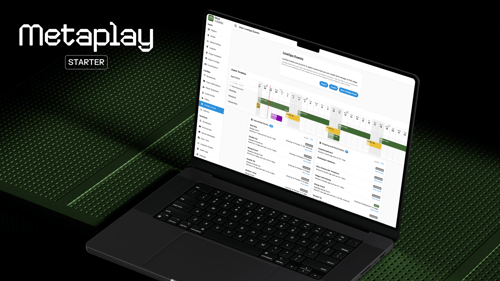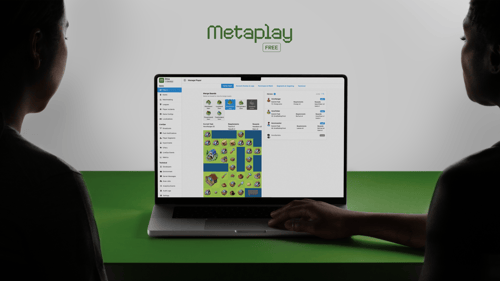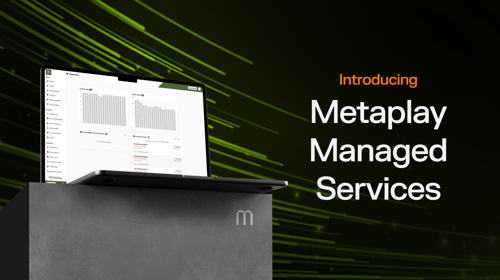
Metaplay: Empowering a new generation of top-grossing mobile games

Teemu Haila •
For too long, game developers have been held back by bad tech. It's time for change.
The birth of Metaplay
After ten years in mobile gaming, which included co-founding a studio that was acquired by Rovio, it dawned on me: the blindspot of the industry, the thing that I repeatedly saw stifle new studios from being lean, nimble, and breaking into the top grossing charts, is their access to truly robust, third party backend technology.
And so the idea of Metaplay came into being. I teamed up with Petri Kero, a veteran industry entrepreneur with several successful exits under his belt in games and software, and Tuomo Jorri, a seasoned extraordinaire of all-things devops, cloud, and infrastructure, to assemble a vastly experienced founding team.
Our complementary skillsets put us in a great position for achieving our mission: solving the most difficult, distracting and expensive bottlenecks in game development.
Keep reading to learn more about our story and our plans for 2023 and beyond.
Launching a new hit game: a tricky landscape

Mobile game developers face an uphill battle when it comes to launching a successful new mobile game.
Macro pressures
On a macro level, Apple’s IDFA deprecation makes it harder for games to run cost-efficient UA campaigns. A far-from-favourable macroeconomic situation has added further pressure, with a fall in VC investment, less in-game spending, and the tightening of studio budgets following in turn.
In fact, revenue of most top gaming genres declined in 2022 compared to the previous year; most notably shooters, which dropped by 14% from $2.1bn to $1.9bn; hypercasual, which dropped 10% from $13.7bn to 12.3bn; and puzzle games, which fell by 8%, from $4.9bn to $4.5bn.
The point being: studios need to be as lean and innovative as possible in order to be profitable over the long-run. Keep that in mind as we go on.
Moats galore
On a more micro level, once you go deeper into the trenches of the industry, and speak to the developers and studio leads, one problem continues to rear its head.
Most of the top earning iOS games in the U.S have created moats through building in-house backend technology from scratch.
Although costly to build and maintain, when done right, internally-made backend tech means total customization - facilitating a constant cycle of in-game innovation and live ops. This results in better retention and stronger user LTV - core tenets of any game’s long-term success.
Here’s the issue: most game studios lack the time or money to build their own backend technology, and so they turn to pre-built solutions.
The problem with pre-built backend tech
The traditional pre-built backend tools do not allow developers to add deep modifications to their game. Instead, they provide inflexible functionalities, which do the job up until a certain point.
Eventually, these limitations clip the wings of developers who want to add innovative features (think Guild Wars in Clash of Clans).
As the games industry undergoes a clear shift towards the live service strategy, which prioritizes adding content to existing titles rather than constantly shipping new games, it’s clear we need a backend solution to support this.
Some of Metaplay’s early customers, for instance, shipped their game using traditional third party backend tools. But when the time came to add deeper features to take the gameplay experience to a new level, they were left with a headache.
Two choices remained: begin building out their own backend tech and migrating everything across, or find an alternative third-party solution.
That’s where we came in.
Metaplay: The backend solution for ambitious game developers

Metaplay provides game developers with the same flexibility as internally built backend tech, without needing to actually hire a team of engineers.
We’ve worked in stealth mode over the last four years, refining our product with a small group of hand-selected clients that have gone onto make games with hundreds of millions of players.
We now have a backend that I wish I had available when I launched Playraven back in 2013. Metaplay lets developers make feature complete games, with tools for:
-
Game programming (think: workflow overhauls designed for more-efficient-than-ever iterations, like shared client<>server game logic, offline development mode, and in-built testing tools - as well as pre-built code for a game's most crucial features)
-
Backend engineering (a fully-programmable and authoritative server that's purpose-built for top-tier game development)
-
Product management and LiveOps (tools for staying one step ahead of your players, even when there's millions playing every day, such as custom data pipelines, segmentation and personalisation, and A/B testing)
-
Player support and QA (a full player management admin suite that's directly integrated into your game's backend, for easier-than-ever player management)
And even better, we ship all of this in source code deployed into our clients' own cloud - which not only makes all of our pre-built tools and ready-made game features totally extensible and customizable, but also puts them firmly in the control of our customers. Anyone who uses Metaplay is safe in the knowledge that should anything ever happen to us, their game will keep on running.
With our tools, studios have the foundations for getting games to market fast now, without sacrificing their future capabilities to grow. Everything in the Metaplay stack is designed to support future innovation and the most dynamic of live ops strategies, all while saving game developers significant time and money.
But don't just take my word for it - here’s what Erik Pöntiskoski, CEO of Dodreams had to say:
“Metaplay has allowed us to scale the Drive Ahead! game and brand much faster than we otherwise could have. With our tech completely handled, we can focus solely on making our game better and our players happier - which is great for our growth”.

Erik Pöntiskoski, CEO of Dodreams
Why the time is now for Metaplay to go global
The past four years have taught us that while a solution like ours is much-needed by any ambitious studio that doesn't have proprietary backend tech, it takes a long time to get it right.
In short? Building backends is hard (just ask anyone at a studio which is building their own).
And when we're talking about a full-stack backend - a wholly-integrated tool that covers a game developer for every stage of development, from pre-production to global launch - it's even harder still.
That's why we've been refining Metaplay in the shadows, hand-in-hand with a select few clients who are using our tool every day, though almost a step away the rest of the industry. We wanted to make sure we had a product that was as complete as possible before sharing it far and wide.
We're proud to say we're now at that point. The praise we receive from the studios already using our tech - and the excited feedback we get from the potential new studios we demo it to - prove there really is a demand for a tool like Metaplay all over the world.
And it's that demand which we are setting out to meet.
The gametech ecosystem supporting the mobile games industry is renowned for its innovation. Metaplay’s vision is to bring the power to deliver top-grossing games to every ambitious mobile game maker. We're setting out to equip ambitious game developers from San Francisco to Singapore with the tech, tools, and know-how they need to make and manage top-grossing games more simply, more professionally, and more reliably than they could anywhere else.
We can't wait for more developers to join us for the ride.



